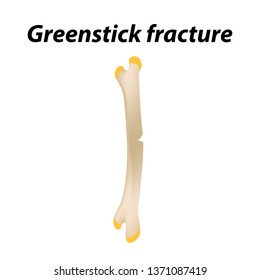Comprehend The Covert Reasons For Your Pain In The Back And Take Positive Actions Towards Better Health
Comprehend The Covert Reasons For Your Pain In The Back And Take Positive Actions Towards Better Health
Blog Article
Content By-McKay Butcher
If you're experiencing neck and back pain, your body may be attempting to tell you something more than simply pain. The way your back feels can provide important ideas about your overall wellness. Recognizing the specific sort of pain you're really feeling and any kind of accompanying symptoms is key to unraveling the mystery behind your discomfort. Let's check out the usual conditions and signs and symptoms associated with different kinds of pain in the back to shed light on what your body might be signaling.
Sorts Of Pain In The Back
When it pertains to neck and back pain, there are different kinds that you may experience. One common type is muscle mass discomfort, often brought on by overuse, pressure, or injury to the muscular tissues and tendons supporting the spine. This kind of discomfort can vary from light pain to severe and devastating discomfort.
Another type is nerve discomfort, which can result from conditions like herniated discs or sciatic nerve pain. Nerve discomfort frequently provides as a sharp, shooting experience that emits down the leg.
Joint pain in the back can come from issues like joint inflammation or sacroiliac joint disorder. This kind of discomfort is generally really felt in the lower back and can be worsened by specific movements.
Additionally, pain in the back can be connected to structural troubles such as spine stenosis or vertebral fractures. Understanding the sort of back pain you're experiencing is vital in determining the ideal therapy and administration techniques.
Common Symptoms to Look For
Relocating past the numerous kinds of pain in the back, it is very important to identify the usual signs and symptoms that can indicate underlying issues.
Consistent pain in the back that intensifies with activity or during the night can show a more severe trouble. my lower back hurts and needles or prickling in the legs or feet, specifically when accompanied by weak point, could point to a nerve-related concern. If what to take for back pain experience sudden fat burning along with pain in the back, it could be an indicator of a more systemic problem.
Take notice of any changes in bladder or digestive tract function, as this could be linked to spine compression. Fever, chills, or night sweats combined with neck and back pain may signal an infection. Keep an eye out for pain that radiates down one or both legs, possibly a measure of sciatica.
Wellness Conditions Linked to Back Pain
If you experience back pain, it's vital to understand the prospective health conditions connected to this discomfort. Pain in the back can be a signs and symptom of numerous underlying problems, consisting of muscle pressures, herniated discs, osteo arthritis, spine stenosis, and even conditions like kidney rocks or infections.
Muscle pressures prevail and commonly result from raising hefty items or abrupt activities.
pain left lower back take place when the soft cells in between vertebrae protrudes, triggering nerve inflammation.
Osteo arthritis, a degenerative joint disease, can bring about pain in the back as cartilage wears down.
Back stenosis, the narrowing of the spinal canal, can tax nerves.
Kidney rocks might cause intense back pain if they relocate into the urinary system tract.
Infections like spine osteomyelitis can also manifest as neck and back pain. Understanding these prospective health problems can aid you seek suitable healthcare and management for your back pain.
Verdict
So, following time your back hurts, take note of the kind of discomfort and going along with signs. Maybe a signal from your body concerning underlying health and wellness conditions like muscular tissue pressure, nerve concerns, joint issues, or perhaps architectural issues. By acknowledging these indicators, you can take proactive steps to address the origin of your pain in the back and improve your general wellness and health.
